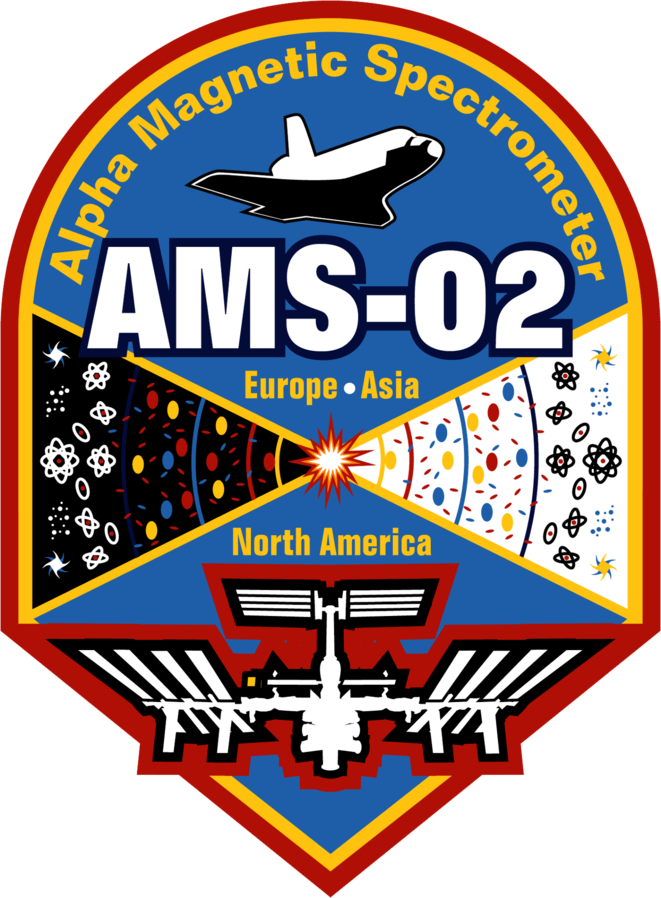Precision Measurement of Cosmic-Ray Nitrogen and its Primary and Secondary Components with the Alpha Magnetic Spectrometer on the International Space Station
A precision measurement of the nitrogen flux with rigidity (momentum per unit charge) from 2.2 GV to 3.3 TV based on 2.2×106 events is presented. The detailed rigidity dependence of the nitrogen flux spectral index is presented for the first time. The spectral index rapidly hardens at high rigidities and becomes identical to the spectral indices of primary He, C, and O cosmic rays above ∼700 GV. We observed that the nitrogen flux $\Phi_{\rm N}$ can be presented as the sum of its primary component $\Phi^{\rm P}_{\rm N}$ and secondary component $\Phi^{\rm S}_{\rm N}$, $\Phi_{\rm N}=\Phi^{\rm P}_{\rm N}+\Phi^{\rm S}_{\rm N}$, and we found $\Phi_{\rm N}$ is well described by the weighted sum of the oxygen flux $\Phi_{\rm O}$ (primary cosmic rays) and the boron flux $\Phi_{\rm B}$ (secondary cosmic rays), with $\Phi^{\rm P}_{\rm N} = (0.090\pm0.002)\times\Phi_{\rm O}$ and $\Phi^{\rm S}_{\rm N} = (0.62\pm0.02)\times\Phi_{\rm B}$ over the entire rigidity range. This corresponds to a change of the contribution of the secondary cosmic ray component in the nitrogen flux from 70% at a few GV to < 30% above 1 TV.
Table-SM-I
Download the tableThe nitrogen flux $\Phi_{\rm N}$ as a function of rigidity at the top of AMS including errors due to statistics (stat); contributions to the systematic error from the trigger, acceptance and background contamination (acc); the rigidity resolution function and unfolding (unf); and the total systematic error (syst). The contribution of individual sources to the systematic error are added in quadrature to arrive at the total systematic error. The Monte Carlo event samples have sufficient statistics such that they do not contribute to the errors.
Table-SM-II
Download the tableThe nitrogen to oxygen flux ratio N/O as a function of rigidity including errors due to statistics (stat); contributions to the systematic error from the trigger, acceptance and background contamination (acc); the rigidity resolution function and unfolding (unf); the absolute rigidity scale (scale); and the total systematic error (syst). The statistical errors are the quadratic sum of the relative statistical errors of the nitrogen and oxygen fluxes multiplied by the N/O ratio. The systematic errors from the background subtraction, the trigger, and the event reconstruction and selection are likewise added in quadrature. The correlations in the systematic errors from the uncertainty in nuclear interaction cross sections, the unfolding and the absolute rigidity scale between the nitrogen and oxygen fluxes have been taken into account in calculating the corresponding systematic errors of the N/O ratio. The contribution of individual sources to the systematic error are added in quadrature to arrive at the total systematic uncertainty.
Table-SM-III
Download the tableThe nitrogen to boron flux ratio N/B as a function of rigidity including errors due to statistics (stat); contributions to the systematic error from the trigger, acceptance and background contamination (acc); the rigidity resolution function and unfolding (unf); the absolute rigidity scale (scale); and the total systematic error (syst). The statistical errors are the quadratic sum of the relative statistical errors of the nitrogen and boron fluxes multiplied by the N/B ratio. The systematic errors from the background subtraction, the trigger, and the event reconstruction and selection are likewise added in quadrature. The correlations in the systematic errors from the uncertainty in nuclear interaction cross sections, the unfolding and the absolute rigidity scale between the nitrogen and boron fluxes have been taken into account in calculating the corresponding systematic errors of the N/B ratio. The contribution of individual sources to the systematic error are added in quadrature to arrive at the total systematic uncertainty.
The CRDB at LPSC/IN2P3/CNRS, online since 2013, is fully described in Maurin et al. (2014, 2020)
The CRDB © SSDC is developed at the Space Science Data Center, a facility of the Italian Space Agency (ASI).
